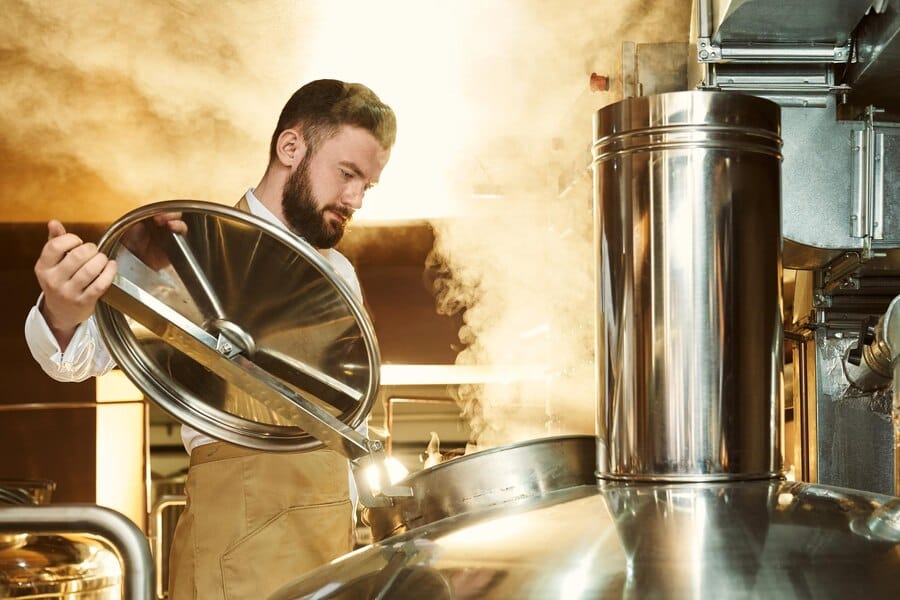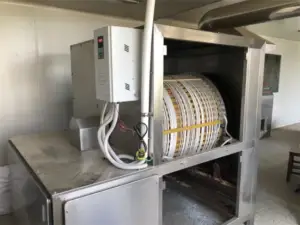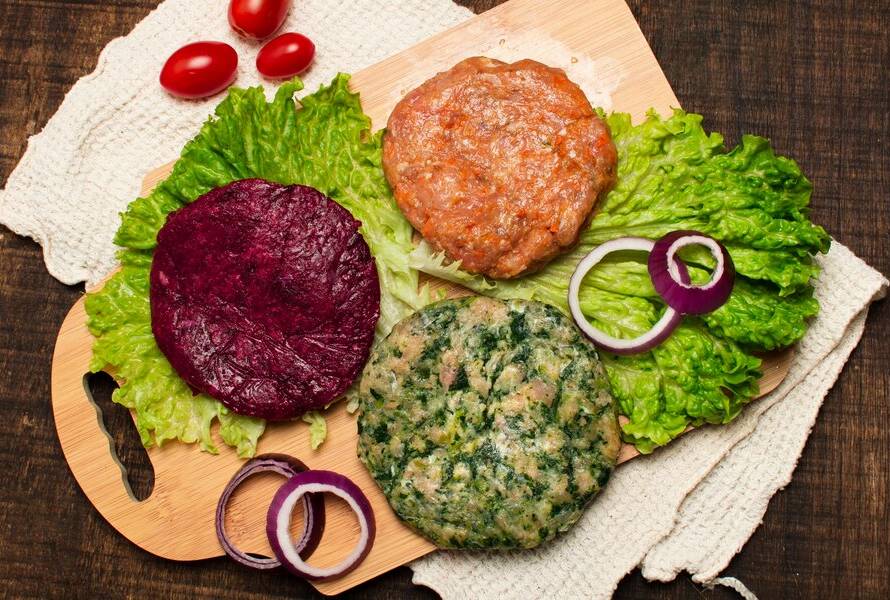
Induction heating technology in the food industry is one of the modern technologies that has greatly affected food processing and heating methods. This technology allows materials to be heated quickly and accurately, which contributes to improving production efficiency and preserving food quality.
In this article, we will discuss how induction heating technology works in the food industry, examples of its uses in various food industries, in addition to its benefits and challenges.
What is induction heating technology?
Induction heating technology is a process that relies on the use of alternating electric currents (AC) to generate heat directly inside materials. This is done by placing the material to be heated in a changing magnetic field created by an induction coil. When the electric current passes through the coil, a magnetic field is generated that causes eddy currents (eddy currents) to flow inside the material, which leads to rapid heating.
In the food industry, this technology allows food to be heated accurately and directly, which leads to improving quality and reducing the time required for the heating process. Induction heating technology is ideal for applications that require rapid and precise heating, such as heating inside metal cans or foods packaged in metal containers.
Uses of induction heating technology in the food industry
1- Heating food in restaurants and factories
Induction heating technology is one of the most effective technologies for heating food in restaurants and factories. In restaurants, it can be used to quickly heat meals without affecting their quality or taste. In factories, this technology provides an ideal solution for heating food uniformly and quickly during production processes.
2- Sterilization of packaged foods
Induction heating technology is used to sterilize foods packaged in metal containers such as canned foods. Through this technology, foods are heated quickly inside the package itself, which helps kill bacteria and viruses effectively without the need to add chemicals or preservatives. This method contributes to preserving the nutritional value of food.
3- Heating frozen foods
In some factories, induction heating is used to quickly heat frozen foods, which reduces the time required to prepare food and contributes to reducing food waste. Induction heating gives these foods even heat throughout their parts, which improves the quality of the final product.
4- Instant cooking of food
Induction heating technology is also used in instant cooking systems for food, such as ovens that use induction in rapid cooking processes. These systems rely on heating food in record time and evenly, which reduces negative effects on flavor and texture.
5- Directed heating of meat and fish products
In the meat and fish industry, induction heating technology helps to heat products precisely, which prevents the meat from drying out or losing nutrients. Processors are able to adjust the temperature precisely while processing these sensitive products, which improves their quality.
Benefits of induction heating technology in the food industry
1- Fast and accurate heating
One of the most prominent benefits of induction heating technology in the food industry is that it provides fast and accurate heating. The temperature can be precisely controlled, ensuring that food is heated in a uniform and even manner. This contributes to reducing food waste and improving the quality of the final products.
2- Improving food quality
Induction heating technology contributes to preserving the nutritional value of food, as it does not require the addition of chemicals or preservatives. Moreover, since heating occurs within the material itself, the loss of flavor and texture is reduced compared to traditional heating methods.
3- Increased energy efficiency
Induction heating technology is considered one of the most energy efficient methods. Since heat is generated directly within the material, energy is not wasted in ambient heating. This makes this technology ideal in production environments that require high energy efficiency.
4- Compatibility with metal materials
Induction heating technology works very efficiently with metal materials, making it ideal for foods packaged in metal containers. This feature makes induction an ideal choice in food factories that use metal containers.
How to Implement Induction Heating Technology in Food Production Lines
Implementing induction heating technology in food production lines requires some adjustments and careful planning to ensure the best results. First, you must have an induction heating device that is suitable for the products you are working on. Devices vary depending on the production volume and the needs of the factory, and can include single or multi-oven heating systems or integrated systems.
One of the main benefits of this technology is the ability to control temperatures precisely, allowing producers to adjust heating to suit the characteristics of the food item. For example, liquid foods may require different technology than solid or frozen foods. Furthermore, workers must be trained to handle these modern devices to ensure their safety and efficiency in their use.
Induction Heating Technology and its Role in Improving the Sustainability of the Food Industry
Induction heating technology plays a major role in improving the sustainability of the food industry by reducing energy consumption and reducing food waste. Since heating occurs within the material itself, there is no need to heat the surrounding environment, which means saving energy and reducing thermal waste. This energy efficiency is not only economically beneficial, but also contributes to reducing the environmental impact of industrial production.
In addition, since this technology contributes to better preservation of food, it plays a major role in reducing food waste. By reducing the time it takes for food to reach the ideal temperature, food remains fresher, while retaining many of its nutritional properties.
Integration of induction heating with other technologies in the food industry
Induction heating technology can be excellently integrated with other technologies in the food industry, such as slow-heating sterilization or flash-freezing technologies. It can be used at multiple stages of the production process, contributing to improving the overall quality of the final product. For example, induction heating can be combined with technologies such as vacuum freezing (freeze-dryer) or steam cooking, to achieve the ideal combination of efficiency, taste and texture.
By integrating these technologies, companies can get the most out of each process, increasing the efficiency of their production processes and improving their competitiveness in the market.
Prominent companies that have adopted induction heating technology in their industries
Several leading companies in the food industry have already adopted induction heating technology to improve the efficiency of their production lines. For example, canned food companies such as Del Monte and Nestlé have used this technology to sterilize canned foods more efficiently. Fast food companies such as McDonald’s and Burger King have also benefited from induction heating to improve the speed of food preparation while maintaining its quality.
These companies are examples of how this technology can be used to reduce the time spent in production processes, in addition to maintaining quality and providing fresh products to consumers.
The Future of Induction Heating Technology in the Food Industry
With the development of induction heating technologies and the emergence of more advanced and cost-effective devices, this technology is expected to be an integral part of the industrial future in the food sector. It is expected to become more widespread in small and medium-sized factories due to the decrease in equipment costs and the increase in awareness of the environmental and economic benefits of this technology.
The future of induction heating in the food industry does not stop only at improving efficiency or reducing food waste, but extends to the ability to deal with other technologies such as the Internet of Things (IoT) and artificial intelligence. These technologies may contribute to improving process control and making it more customized according to the type of food to be processed.
The Importance of Consulting on the Application of Induction Heating Technology
If you run a food facility and want to implement induction heating technology in your production lines, obtaining specialized consultations in this field is of utmost importance. ProNano Food Industry Consulting Company provides comprehensive consulting support to those interested in implementing this technology in their facilities. With its extensive experience, the company can help you choose the right system, conduct a feasibility analysis, and provide the necessary training to ensure the successful and effective use of this technology.
Induction heating technology in the food industry represents a qualitative leap in the field of food processing, providing innovative solutions to improve efficiency and quality in production lines. By heating food quickly and accurately, this technology contributes to reducing food waste and preserving the flavor and quality of products.
If you are interested in implementing induction heating technology in your food industry, ProNano Food Industry Consulting Company provides specialized consulting services to help you implement this technology in your production lines. We can help you choose the right equipment, provide training on how to optimally use the technology, and provide consultations on induction heating integration with existing production processes.
To contact us and consult our experts in this field, do not hesitate to visit our website or contact us for a customized consultation that suits your needs.
Read more about food allergens



